
Joseph-Siffred Duplessis Painting Reproductions 1 of 1
1725-1802
French Rococo Painter
Joseph-Siffred Duplessis (Carpentras, near Avignon, 22 September 1725 - Versailles, 1 April 1802) was a French painter, known for the clarity and immediacy of his portraits.
He was born into a family with an artistic bent and received his first training from his father, a surgeon and talented amateur, then with Joseph-Gabriel Imbert (1666-1749), who had been a pupil of Charles Le Brun. From 1744-47 or later he worked in Rome, in the atelier of Pierre Subleyras, who was also from the south of France, who died in 1749. In Italy Duplessis became fast friends with Joseph Vernet, another Occitan.
He returned to Carpentras, spent a brief time in Lyon then arrived about 1752 in Paris, where he was accepted into the Academie de Saint-Luc and exhibited some portraits, which were now his specialty, in 1764, but did not achieve much notice until his exhibition of ten paintings at the Paris salon of 1769, very well received and selected for special notice by Denis Diderot; the Academie de peinture et de sculpture accepted him in the category of portraitist, considered a lesser category at the time. He continued to exhibit at the Paris salons, both finished paintings and sketches, until 1791, and once more, in 1801.
His portrait of the Dauphine in 1771 and his appointment as a peintre du Roi assured his success: most of his surviving portraits date from the 1770s and 1780s. He received privileged lodgings in the Galeries du Louvre. In the Revolution, he withdrew to safe obscurity at Carpentras during the Reign of terror. Afterwards, from 1796, he served as curator at the newly-founded museum formed at Versaillles, so recently emptied of its furnishings at the Revolutionary sales. His uncompromising self-portrait at this time of his life is at Versailles.
His adjusted his style to the social condition of his sitter: his portrait of Charles-Claude, comte d'Angiviller, director of the Batiments du Roi, is as distant and conventional as his state portrait of Louis XVI in coronation robes (1776), while his realistic and intimate portrait of the opera composer Christoph Willibald Gluck (Kunsthistorisches Museum, Vienna) catches the composer at the keyboard in a moment of inspiration and his penetrating portrait of the sculptor Christophe Gabriel Allegrain (Louvre Museum, illustration) shows him having just laid down his chisel: this was the morceau de reception that gained him admittance to the Academie.
His portrait of Benjamin Franklin (1778), more than any other, has fixed the image of Franklin for posterity.
His portrait of the financier Jacques Necker hung at Voltaire's Chateau de Coppet. Several reduced versions were made, one of which is at the Louvre.
Many of his portraits received a wider circulation as engravings.
He was born into a family with an artistic bent and received his first training from his father, a surgeon and talented amateur, then with Joseph-Gabriel Imbert (1666-1749), who had been a pupil of Charles Le Brun. From 1744-47 or later he worked in Rome, in the atelier of Pierre Subleyras, who was also from the south of France, who died in 1749. In Italy Duplessis became fast friends with Joseph Vernet, another Occitan.
He returned to Carpentras, spent a brief time in Lyon then arrived about 1752 in Paris, where he was accepted into the Academie de Saint-Luc and exhibited some portraits, which were now his specialty, in 1764, but did not achieve much notice until his exhibition of ten paintings at the Paris salon of 1769, very well received and selected for special notice by Denis Diderot; the Academie de peinture et de sculpture accepted him in the category of portraitist, considered a lesser category at the time. He continued to exhibit at the Paris salons, both finished paintings and sketches, until 1791, and once more, in 1801.
His portrait of the Dauphine in 1771 and his appointment as a peintre du Roi assured his success: most of his surviving portraits date from the 1770s and 1780s. He received privileged lodgings in the Galeries du Louvre. In the Revolution, he withdrew to safe obscurity at Carpentras during the Reign of terror. Afterwards, from 1796, he served as curator at the newly-founded museum formed at Versaillles, so recently emptied of its furnishings at the Revolutionary sales. His uncompromising self-portrait at this time of his life is at Versailles.
His adjusted his style to the social condition of his sitter: his portrait of Charles-Claude, comte d'Angiviller, director of the Batiments du Roi, is as distant and conventional as his state portrait of Louis XVI in coronation robes (1776), while his realistic and intimate portrait of the opera composer Christoph Willibald Gluck (Kunsthistorisches Museum, Vienna) catches the composer at the keyboard in a moment of inspiration and his penetrating portrait of the sculptor Christophe Gabriel Allegrain (Louvre Museum, illustration) shows him having just laid down his chisel: this was the morceau de reception that gained him admittance to the Academie.
His portrait of Benjamin Franklin (1778), more than any other, has fixed the image of Franklin for posterity.
His portrait of the financier Jacques Necker hung at Voltaire's Chateau de Coppet. Several reduced versions were made, one of which is at the Louvre.
Many of his portraits received a wider circulation as engravings.
14 Joseph-Siffred Duplessis Paintings
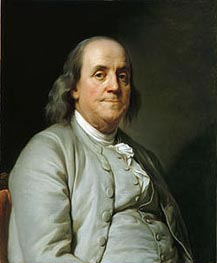
Benjamin Franklin c.1785
Oil Painting
$1740
$1740
Canvas Print
$62.79
$62.79
SKU: DJS-5417
Joseph-Siffred Duplessis
Original Size: 72.4 x 59.7 cm
Smithsonian American Art Museum, Washington, USA
Joseph-Siffred Duplessis
Original Size: 72.4 x 59.7 cm
Smithsonian American Art Museum, Washington, USA
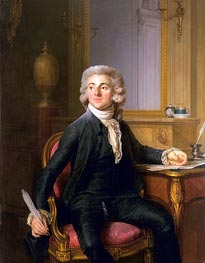
Portrait of a Gentleman (Jean-Baptiste-Francois Dupre) c.1782
Oil Painting
$2448
$2448
Canvas Print
$59.86
$59.86
SKU: DJS-5418
Joseph-Siffred Duplessis
Original Size: 146.7 x 113.7 cm
Fine Arts Museums of San Francisco, California, USA
Joseph-Siffred Duplessis
Original Size: 146.7 x 113.7 cm
Fine Arts Museums of San Francisco, California, USA
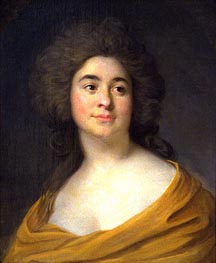
Portrait of a Woman c.1785
Oil Painting
$1514
$1514
SKU: DJS-5419
Joseph-Siffred Duplessis
Original Size: unknown
Fine Arts Museums of San Francisco, California, USA
Joseph-Siffred Duplessis
Original Size: unknown
Fine Arts Museums of San Francisco, California, USA
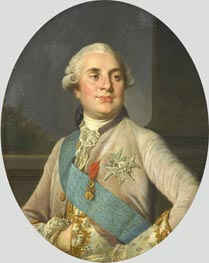
Portrait of Louis XVI c.1775/93
Oil Painting
$2153
$2153
Canvas Print
$61.26
$61.26
SKU: DJS-5420
Joseph-Siffred Duplessis
Original Size: 81 x 64.5 cm
Rijksmuseum, Amsterdam, Netherlands
Joseph-Siffred Duplessis
Original Size: 81 x 64.5 cm
Rijksmuseum, Amsterdam, Netherlands
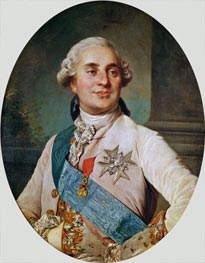
Portrait Medallion of Louis XVI 1775
Oil Painting
$2153
$2153
Canvas Print
$59.86
$59.86
SKU: DJS-5421
Joseph-Siffred Duplessis
Original Size: 80 x 62 cm
Museum of Palace of Versailles, Paris, France
Joseph-Siffred Duplessis
Original Size: 80 x 62 cm
Museum of Palace of Versailles, Paris, France
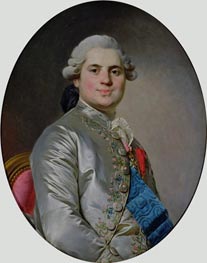
Portrait of Louis of France, Count of Provence, ... 1778
Oil Painting
$2153
$2153
Canvas Print
$50.63
$50.63
SKU: DJS-5422
Joseph-Siffred Duplessis
Original Size: 80 x 64 cm
Musee Conde, Chantilly, France
Joseph-Siffred Duplessis
Original Size: 80 x 64 cm
Musee Conde, Chantilly, France
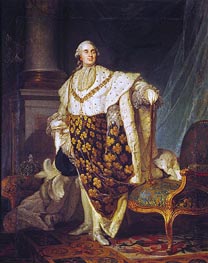
Louis XVI King of France in Coronation Robes 1777
Oil Painting
$5724
$5724
Canvas Print
$61.68
$61.68
SKU: DJS-5423
Joseph-Siffred Duplessis
Original Size: 235 x 187 cm
Museum of Palace of Versailles, Paris, France
Joseph-Siffred Duplessis
Original Size: 235 x 187 cm
Museum of Palace of Versailles, Paris, France
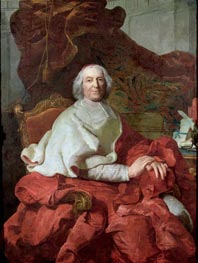
Cardinal Andre Hercule de Fleury, Bishop of ... n.d.
Oil Painting
$2104
$2104
SKU: DJS-5424
Joseph-Siffred Duplessis
Original Size: unknown
Graphische Sammlung Albertina, Vienna, Austria
Joseph-Siffred Duplessis
Original Size: unknown
Graphische Sammlung Albertina, Vienna, Austria
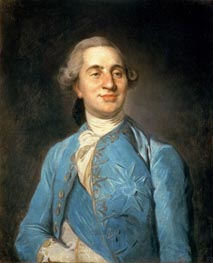
Portrait of Louis XVI 1775
Oil Painting
$1679
$1679
Canvas Print
$51.62
$51.62
SKU: DJS-5425
Joseph-Siffred Duplessis
Original Size: 70 x 57 cm
Pushkin Museum of Fine Arts, Moscow, Russia
Joseph-Siffred Duplessis
Original Size: 70 x 57 cm
Pushkin Museum of Fine Arts, Moscow, Russia
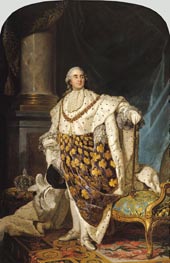
Louis XVI in Coronation Robes a. 1774
Oil Painting
$5613
$5613
Canvas Print
$50.63
$50.63
SKU: DJS-5426
Joseph-Siffred Duplessis
Original Size: 256 x 174 cm
Musee Carnavalet, Paris, France
Joseph-Siffred Duplessis
Original Size: 256 x 174 cm
Musee Carnavalet, Paris, France
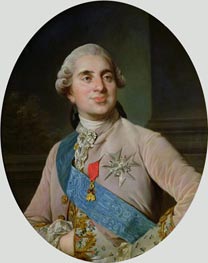
Portrait medallion of Louis XVI 1775
Oil Painting
$2153
$2153
Canvas Print
$61.12
$61.12
SKU: DJS-5427
Joseph-Siffred Duplessis
Original Size: 80 x 64 cm
Musee Conde, Chantilly, France
Joseph-Siffred Duplessis
Original Size: 80 x 64 cm
Musee Conde, Chantilly, France
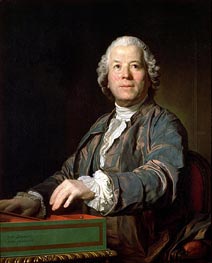
Christoph Willibald von Gluck 1775
Oil Painting
$2178
$2178
Canvas Print
$61.68
$61.68
SKU: DJS-5428
Joseph-Siffred Duplessis
Original Size: 99.5 x 80.5 cm
Kunsthistorisches Museum, Vienna, Austria
Joseph-Siffred Duplessis
Original Size: 99.5 x 80.5 cm
Kunsthistorisches Museum, Vienna, Austria
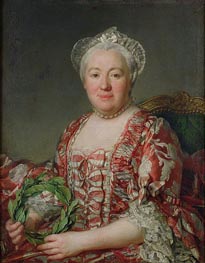
Portrait of Madame Denis n.d.
Oil Painting
$2499
$2499
Canvas Print
$50.63
$50.63
SKU: DJS-5429
Joseph-Siffred Duplessis
Original Size: 80 x 60 cm
Musee Conde, Chantilly, France
Joseph-Siffred Duplessis
Original Size: 80 x 60 cm
Musee Conde, Chantilly, France
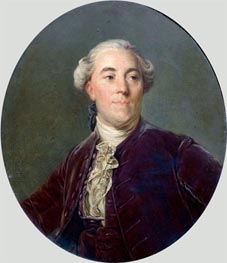
Jacques Necker c.1781
Oil Painting
$1265
$1265
Canvas Print
$50.63
$50.63
SKU: DJS-5430
Joseph-Siffred Duplessis
Original Size: 32 x 27 cm
Museum of Palace of Versailles, Paris, France
Joseph-Siffred Duplessis
Original Size: 32 x 27 cm
Museum of Palace of Versailles, Paris, France